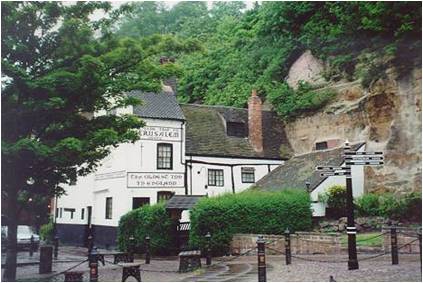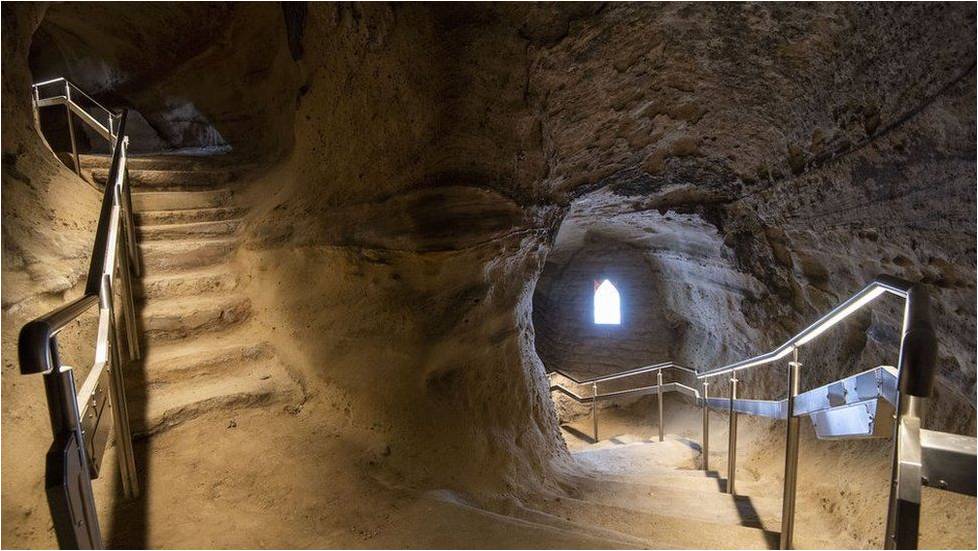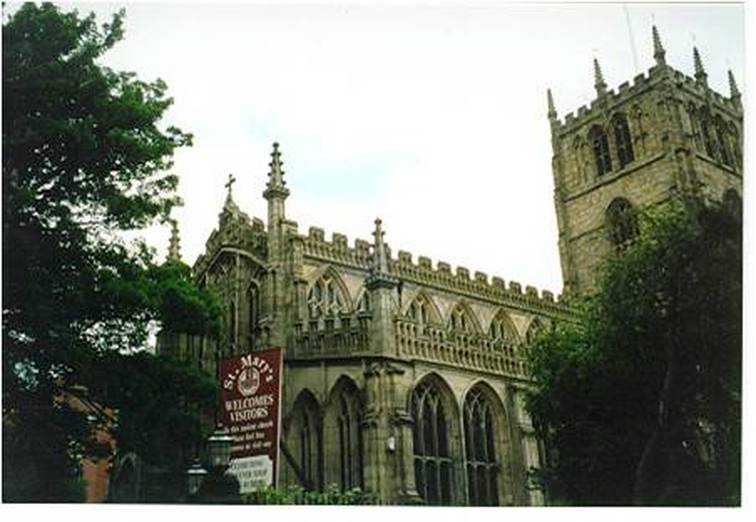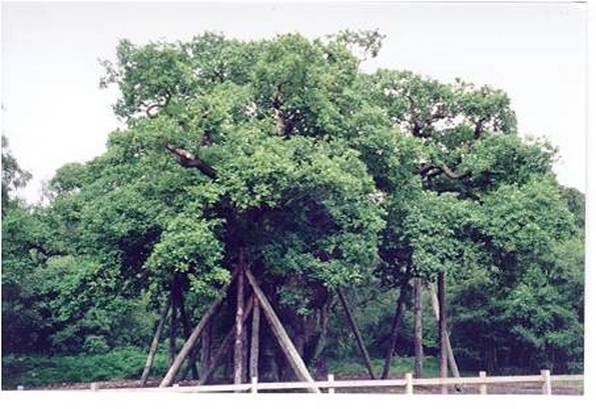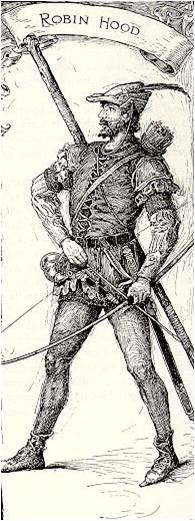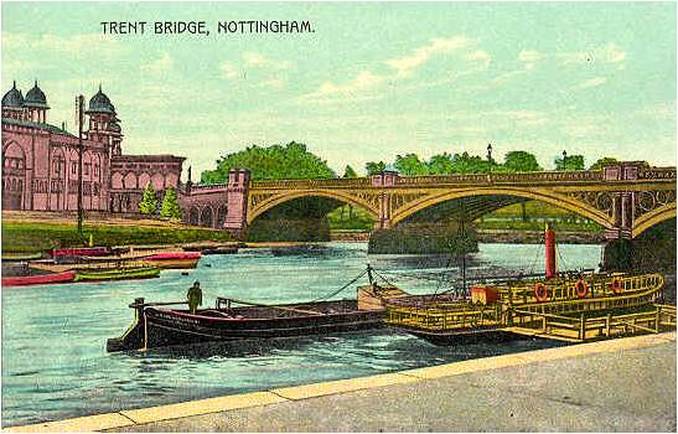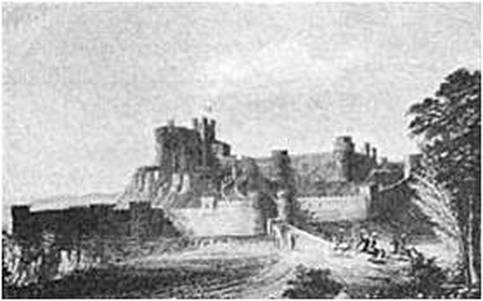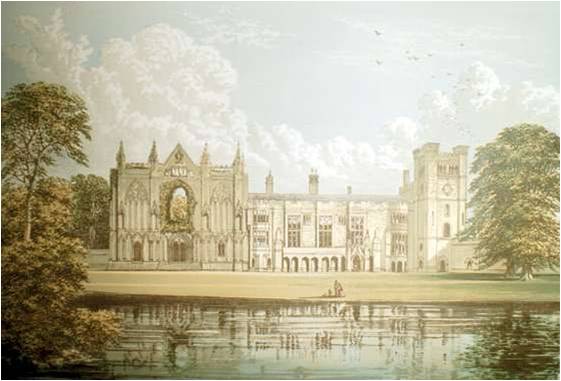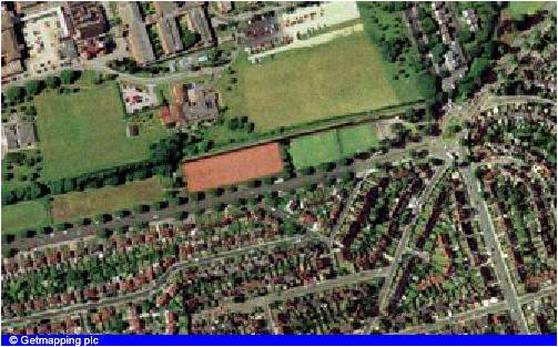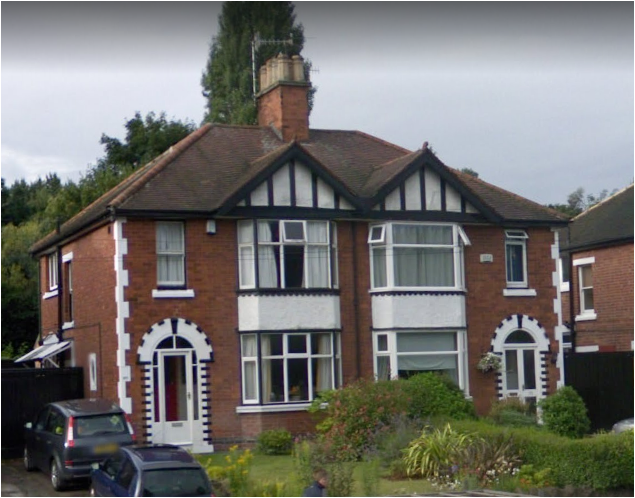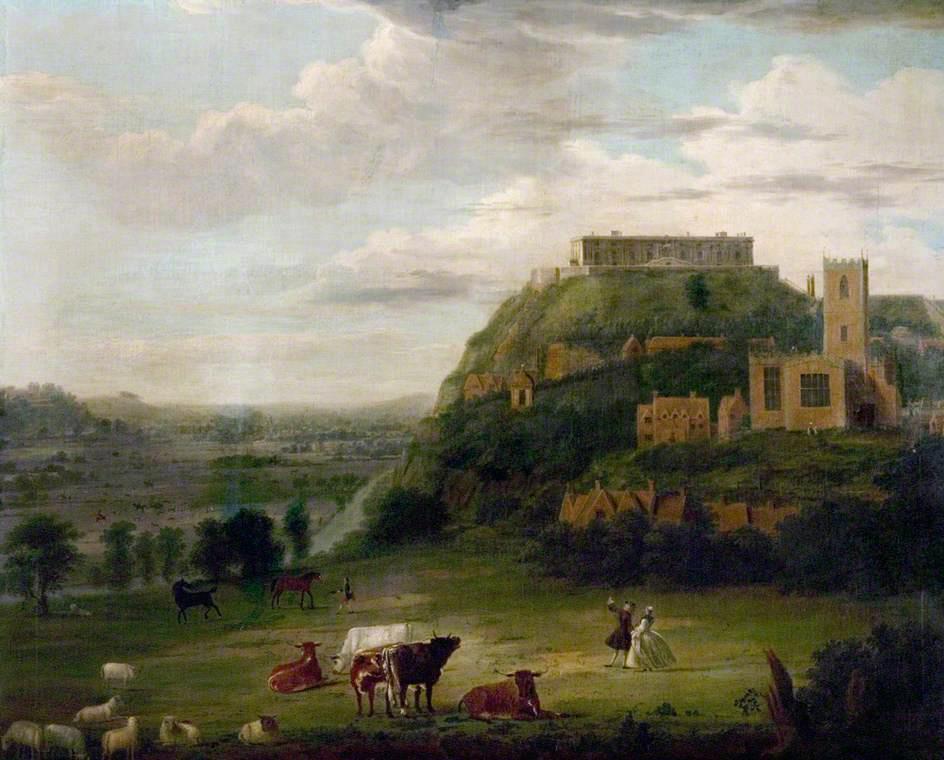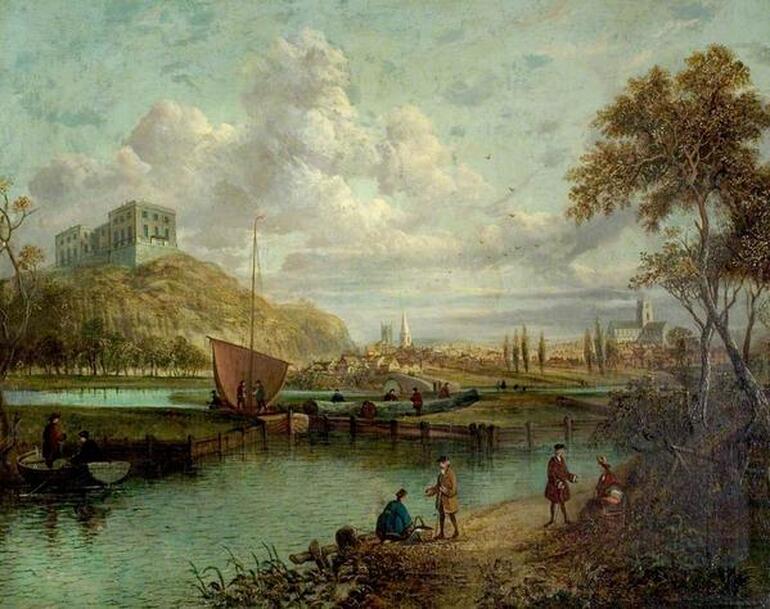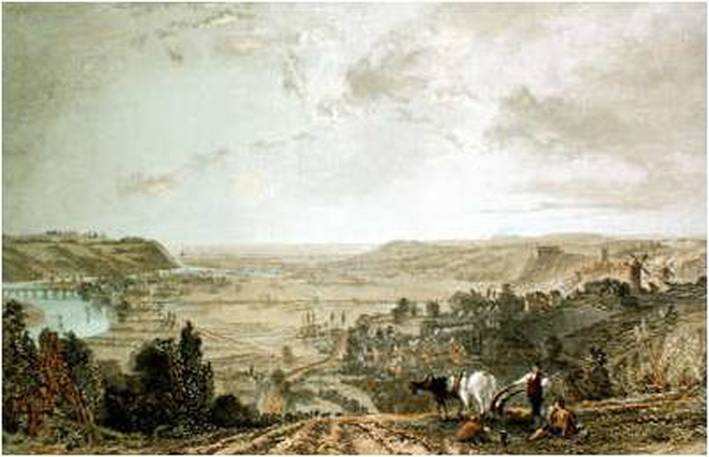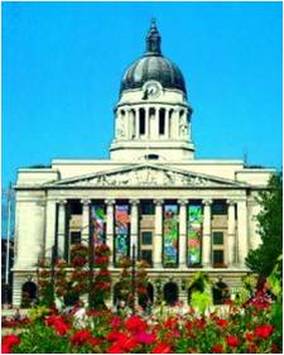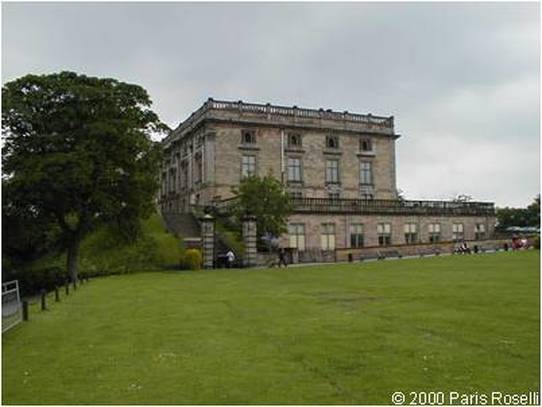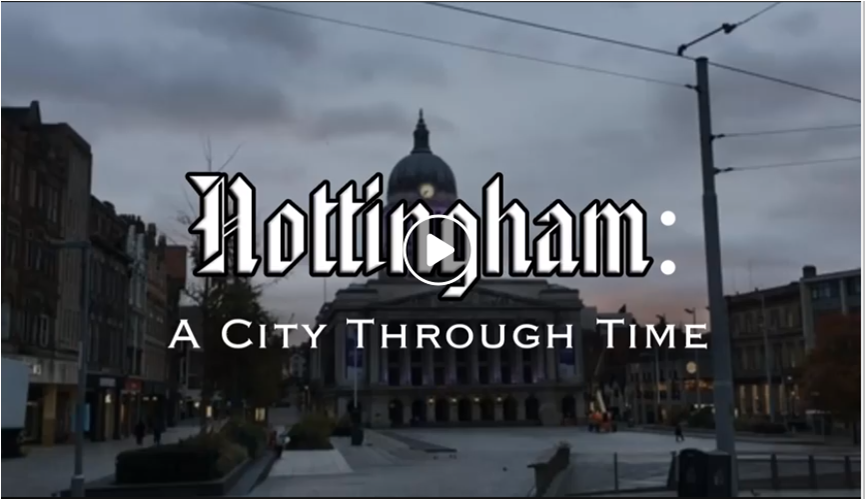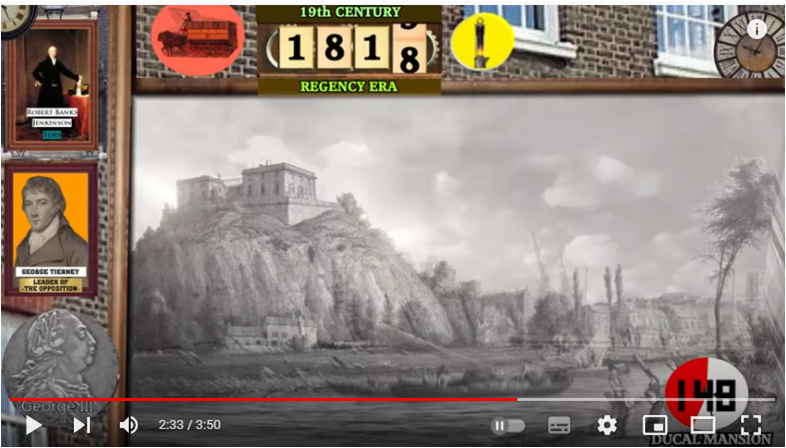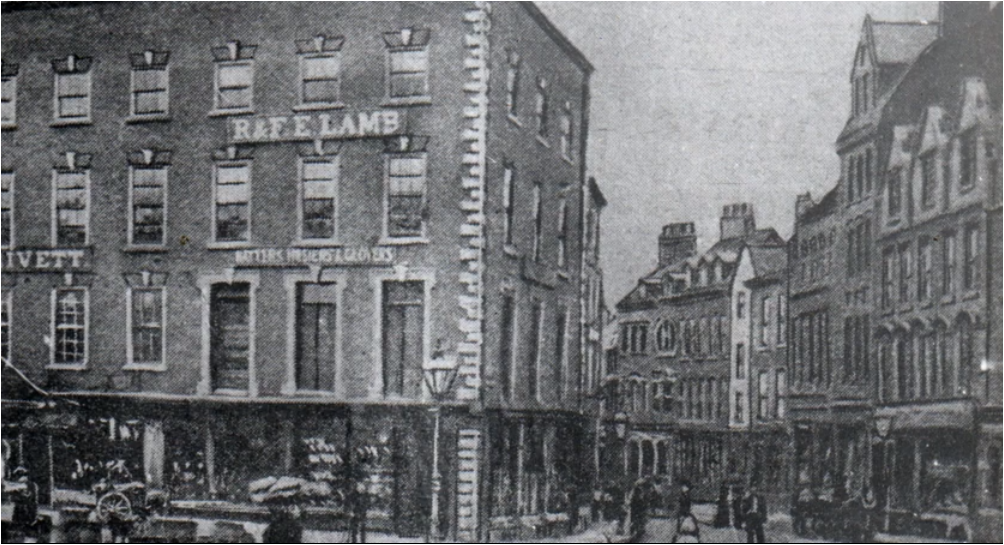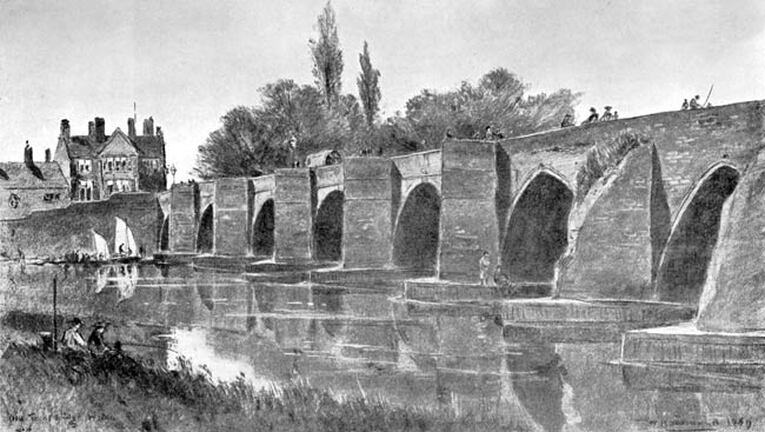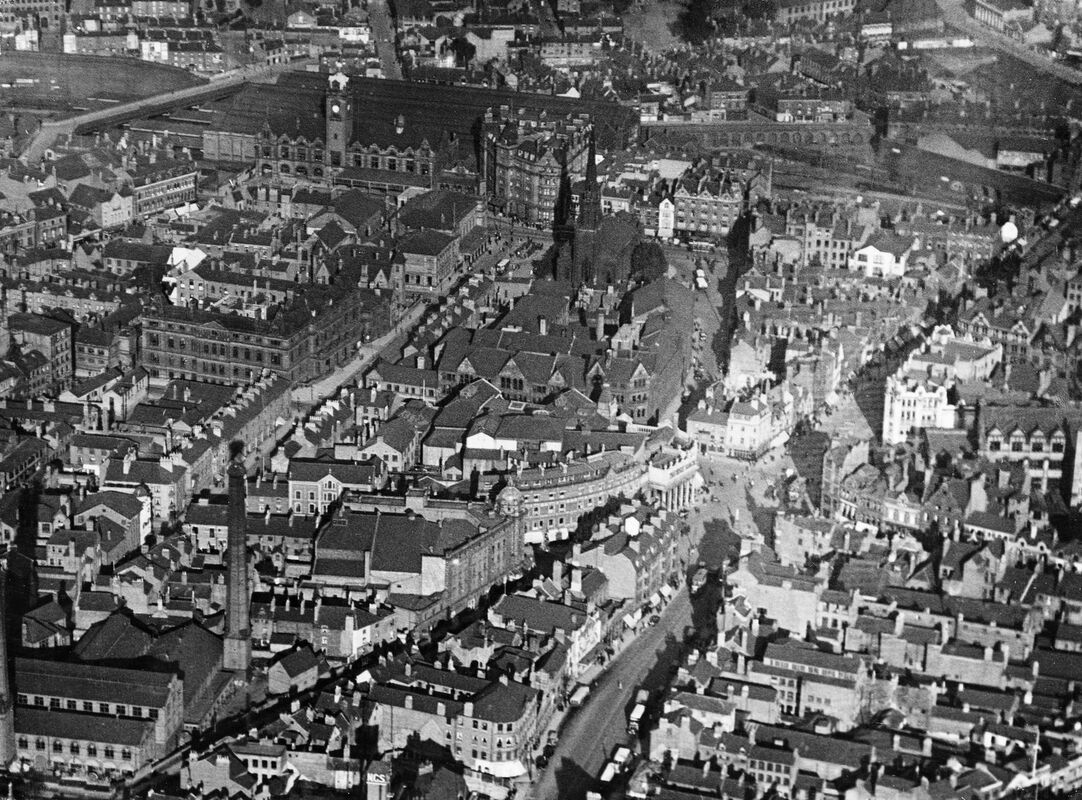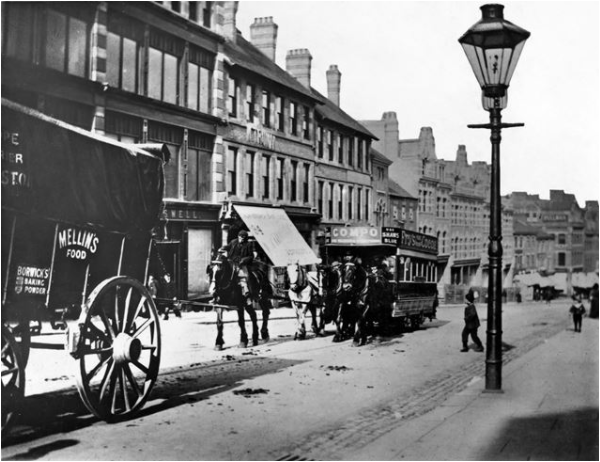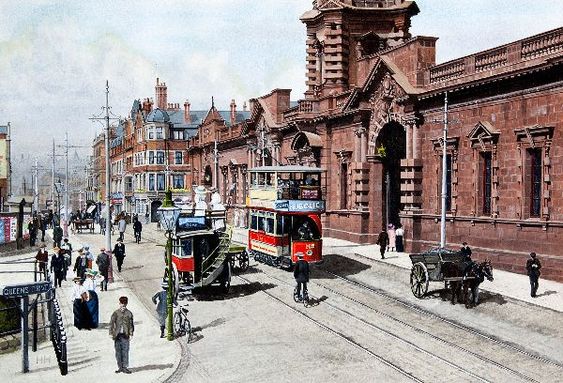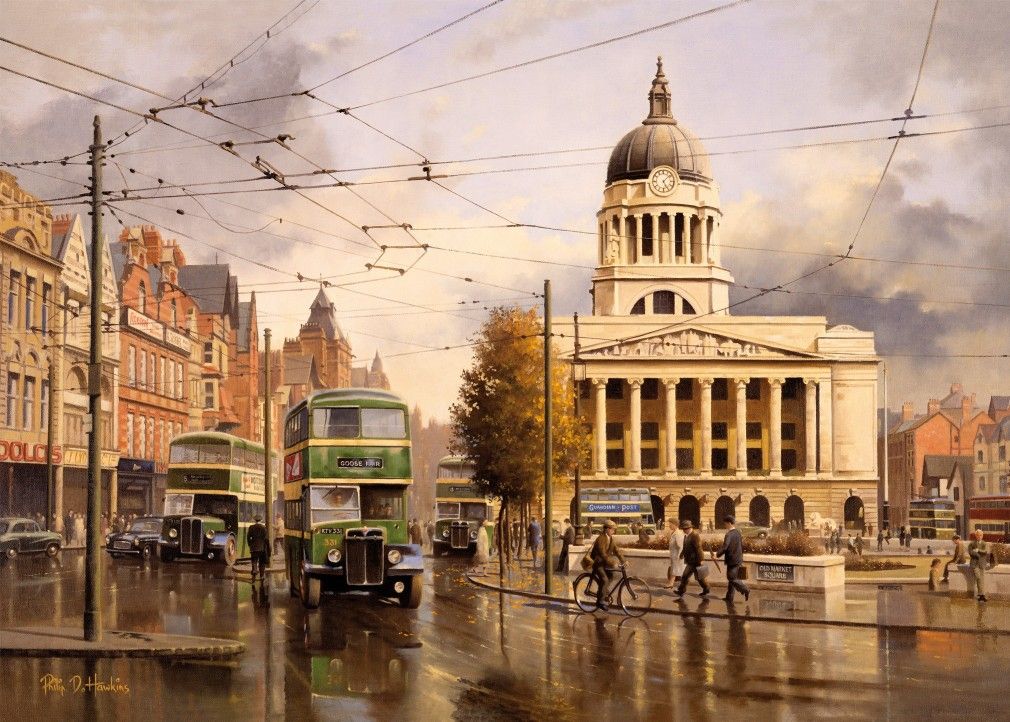| linguae |
|
- HOME
-
LATIN & GREEK
-
CIRCULUS LATINUS HONCONGENSIS
>
- ORATIO HARVARDIANA 2007
- NOMEN A SOLEMNIBUS
- CARMINA MEDIAEVALIA
- BACCHIDES
- LATIN & ANCIENT GREEK SPEECH ENGINES
- MARCUS AURELIUS
- ANGELA LEGIONEM INSPICIT
- REGINA ET LEGATUS
- HYACINTHUS
- LATINITAS PONTIFICALIS
- SINA LATINA >
- MONUMENTA CALEDONICA
- HISTORIA HONCONGENSIS
- ARCADIUS AVELLANUS
- LONDINIUM
- ROMAN CALENDAR
- SOMNIUM
- CIRCULUS VOCABULARY
- HESIOD
- CONVENTUS FEBRUARIUS (I)
- CONVENTUS FEBRUARIUS (II)
- CONVENTUS MARTIUS
- CONVENTUS APR 2018
- CONVENTUS APRILIS
- CONVENTUS MAIUS
- CONVENTUS IUNIUS
- CONVENTUS IULIUS
- CONVENTUS SEPT 2017
- CONVENTUS OCT 2017
- CONVENTUS NOV 2017
- CONVENTUS DEC 2017
- CONVENTUS DEC 2017 (II)
- CONVENTUS JAN 2018
- CONVENTUS FEB 2018
- CONVENTUS MAR 2018
- CONVENTUS MAIUS 2018
- CONVENTUS IUN 2018
- CONVENTUS IUL 2018
- CONVENTUS SEPT 2018
- CONVENTUS OCT 2018
- CONVENTUS NOV 2018
- CONVENTUS DEC 2018
- CONVENTUS NATIVITATIS 2018
- CONVENTUS IAN 2019
- CONVENTUS FEB 2019
- CONVENTUS MAR 2019
- CONVENTUS APR 2019
- CONVENTUS MAIUS 2019
- CONVENTUS IUN 2019
- CONVENTUS IULIUS 2019
- CONVENTUS SEP 2019
- CONVENTUS OCT 2019
- CONVENTUS NOV 2019
- CONVENTUS DEC 2019
- CONVENTUS JAN 2020
- CONVENTUS FEB 2020
- CONVENTUS MAR 2020
- CONVENTUS APR 2020
- CONVENTUS IUL 2020
- CONVENTUS SEP 2020 (I)
- CONVENTUS SEPT 2020 (II)
- CONVENTUS OCT 2020
- CONVENTUS NOV 2020
- CONVENTUS IAN 2021
- CONVENTUS IUN 2021
- CONVENTUS IULIUS 2021
- CONVENTUS AUG 2021
- CONVENTUS SEPT 2021
- CONVENTUS OCT 2021
- CONVENTUS NOV 2021
- CONVENTUS FEB 2022 (1)
- CONVENTUS FEB 2022 (2)
- CONVENTUS MAR 2022
- CONVENTUS APRILIS 2022
- CONVENTUS MAIUS 2022
- CONVENTUS IUN 2022
- CONVENTUS IUL 2022
- CONVENTUS SEP 2022
- CONVENTUS OCT 2022
- CONVENTUS NOV 2022
- CONVENTUS DEC 2022
- CONVENTUS IAN 2023
- CONVENTUS FEB 2023
- CONVENTUS MARTIUS 2023
- CONVENTUS APRIL 2023
- CONVENTUS MAIUS 2023
- CONVENTUS IUN 2023
- CONVENTUS IUL 2023
- CONVENTUS SEP 2023
- CONVENTUS OCT 2023
- CONVENTUS IAN 2024
- CONVENTUS MARTIUS (I) 2024
- RES GRAECAE >
-
IN CONCLAVI SCHOLARI
>
- LATIN I
- LATIN I (CAMBRIDGE)
- LATIN II (CAMBRIDGE)
- LATIN II (MON)
- LATIN II (SAT)
- LATIN III (MON)
- LATIN III (SAT)
- LATIN IV
- LATIN TEENAGERS I
- LATIN TEENAGERS II
- LATIN TEENAGERS III
- LATIN TEENAGERS IV
- LATIN TEENAGERS V
- LATIN TEENAGERS VI
- LATIN TEENAGERS VII
- LATIN TEENAGERS VIII
- LATIN TEENAGERS IX
- LATIN TEENAGERS X
- LATIN TEENAGERS XI
- LATIN SPACE I
- LATIN SPACE II
- LATIN SPACE III
- LATIN SPACE IV
- CARPE DIEM
- INITIUM ET FINIS BELLI
- EPISTULA DE EXPEDITIONE MONTANA
- DE LATINE DICENDI NORMIS >
- ANECDOTA VARIA
- RES HILARES
- CARMINA SACRA
- CORVUS CORAX
- SEGEDUNUM
- VIDES UT ALTA STET NIVE
- USING NUNTII LATINI
- FLASHCARDS
- CARMINA NATIVITATIS
- CONVENTUS LATINITATIS VIVAE >
- CAESAR
- SUETONIUS
- BIBLIA SACRA
- EUTROPIUS
- CICERO
- TACITUS
- AFTER THE BASICS
- AD ALPES
- LIVY
- PLINY
- OVID
- AENEID IV
- AENEID I
- QUAE LATINITAS SIT MODERNA
-
CIRCULUS LATINUS HONCONGENSIS
>
-
NEPALI
- CORRECTIONS TO 'A HISTORY OF NEPAL'
- GLOBAL NEPALIS
- NEPALESE DEMOCRACY
- CHANGE FUSION
- BRIAN HODGSON
- KUSUNDA
- JANG BAHADUR IN EUROPE
- ANCESTORS OF JANG
- SINGHA SHAMSHER
- RAMESH SHRESTHA
- RAMESH SHRESTHA (NEPALI)
- NEPALIS IN HONG KONG
- VSO REMINISCENCES
- BIRGUNJ IMPRESSIONS
- MADHUSUDAN THAKUR
- REVOLUTION IN NEPAL
- NEPAL 1964-2014
- BEING NEPALI
- EARTHQUAKE INTERVIEW
- ARCHIVES IN NEPAL
- FROM THE BEGINNING
- LIMITS OF NATIONALISM
- REST IS HISTORY FOR JOHN WHELPTON
- LIMPIYADHURA AND LIPU LEKH
- BHIMSEN THAPA AWARD LECTURE
- HISTORICAL FICTION
- READING GUIDE TO NEPALESE HISTORY
- LANGUAGES OF THE HIMALAYAS
- REVIEW OF LAWOTI (2007)
- ROMANCE LANGUAGES
-
English
- VIETNAM REFLECTIONS
- GRAMMAR POWERPOINTS
- PHONETICS POWERPOINTS
- MAY IT BE
- VILLAGE IN A MILLION
- ENGLISH RHETORIC
- BALTIC MATTERS
- SHORT STORIES QUESTIONS
- WORD PLAY
- SCOTS
- INTERNATIONAL SCHOOLS
- STORY OF NOTTINGHAM
- MEET ME BY THE LIONS
- MNEMONICS
- ALTITUDE
- KREMLIN'S SUICIDAL IMPERIALISM
- CLASSROOM BATTLEFIELD
- MATHEMATICS AND HISTORICAL LINGUISTICS
- OLD TESTAMENT INJUNCTIONS
- KUIRE ORIGINS
- BALTI
- CUBA
- JINNAH AND MODERN PAKISTAN
- ENGLISH IS NOT NORMAL
- HKAS
THE STORY OF NOTTINGHAM
[The main part essay was written in about 2000 and many of the links to other sites no longer work; they will be replaced with new ones later]
Nottingham is a city in the Midlands (the central area of England), about 120 miles north of London and with a population of around 300,000. There are pictures of the Market Square and the Council House in the center of the city below and at:
Nottingham is a city in the Midlands (the central area of England), about 120 miles north of London and with a population of around 300,000. There are pictures of the Market Square and the Council House in the center of the city below and at:
|
http://www.britannia.com/tours/rhood/nottingham.html
Our family lived in a suburb called Sherwood two and a half miles further north (see aerial photo below) but I went to a secondary school on the bank of the River Trent a couple of miles south of the centre. I had to take two buses to get to school and I caught the second one in the Market Square, just to the right of where the pictures were taken. Nottingham's original name was `Snotengaham', which means in old English `the settlement of Snot's people'. Snot and his followers perhaps founded a village there in around 600 A.D. Before this time the Trent had probably formed the boundary between lands conquered by the English, who had recently arrived in Britain from mainland Europe, and the original Celtic inhabitants, who remained independent in the north and west of the island. Possibly Snot's people lived for some time on the south bank of the Trent and crossed over when Celtic power was weakening. The site of their new home was attractive because it was on the top of a sandstone cliff near the first point where the Trent was shallow enough to be forded. It was easy to tunnel into the |
sandstone and for many centuries some of the inhabitants made caves to use as houses and as workshops. You can read about these caves and see pictures of them at: http://www.nottinghamhistory.co.uk/local/caves.htm
A 9th. century writer says that Nottingham's name in Welsh was `Tig Guocobauc' (`House of Caves'). Welsh is just a later form of the old British Celtic language (do you remember reading about that in `English and Other Languages'?) so perhaps Nottingham had that name before Snot's time. In any case, the Celts (and even earlier peoples) must have made homes in the cliffs just as the English did.
The first precisely dated event in Nottingham's history was its capture by Danish invaders in 868 (see the text on pg.8). Some of the streets around the Market Square still have `gate' (the Danish word for `street') in their names and, although the town was soon back under English control, Old Danish would have continued to be heard in the city and the surrounding area for many years alongside Old English: the two languages were quite similar and you can listen on YouTube to how they probably sounded in about 1000 A.D.
After the reconquest, one of the English kings built a bridge over the River Trent on the main route south from the town. There is still a bridge in the same place, very close to Nottingham Forest's football ground. After the French-speaking Normans conquered England in the 11th century they built a castle to the west of the English-settlement (see the picture of the old castle on pg. 6 below and a photo of the present-day castle, which was built in the 17th. Century, on pg. 9 or at http://www.theguide-uk.com/nottingham/ ). Next to the castle there is still a pub called `The Olde Trip to Jerusalem', whose oldest part was supposedly carved out of the hill in 1189 (picture below from: http://www.geocities.com/puckrobin/rh/robpics.html ), though its use as a pub probably only began much later (see the History Hunters video).
A 9th. century writer says that Nottingham's name in Welsh was `Tig Guocobauc' (`House of Caves'). Welsh is just a later form of the old British Celtic language (do you remember reading about that in `English and Other Languages'?) so perhaps Nottingham had that name before Snot's time. In any case, the Celts (and even earlier peoples) must have made homes in the cliffs just as the English did.
The first precisely dated event in Nottingham's history was its capture by Danish invaders in 868 (see the text on pg.8). Some of the streets around the Market Square still have `gate' (the Danish word for `street') in their names and, although the town was soon back under English control, Old Danish would have continued to be heard in the city and the surrounding area for many years alongside Old English: the two languages were quite similar and you can listen on YouTube to how they probably sounded in about 1000 A.D.
After the reconquest, one of the English kings built a bridge over the River Trent on the main route south from the town. There is still a bridge in the same place, very close to Nottingham Forest's football ground. After the French-speaking Normans conquered England in the 11th century they built a castle to the west of the English-settlement (see the picture of the old castle on pg. 6 below and a photo of the present-day castle, which was built in the 17th. Century, on pg. 9 or at http://www.theguide-uk.com/nottingham/ ). Next to the castle there is still a pub called `The Olde Trip to Jerusalem', whose oldest part was supposedly carved out of the hill in 1189 (picture below from: http://www.geocities.com/puckrobin/rh/robpics.html ), though its use as a pub probably only began much later (see the History Hunters video).
|
The Norman and English towns had separate local governments until about 1300 but their inhabitants came together to buy and sell in the area which is now Market Square. The boundary wall between the two districts survived down until the 18th century and a virtual reconstruction can be seen in a video produced recently by Nottingham Trent University It was probably the Normans who changed the name from `Snotingham’ to `Nottingham’ since the combination `sn’ is difficult for speakers of French to pronounce. The change was a lucky one for all the people of the town because in modern English slang the word `snot’ means secretions from inside the nose!
To the north of the town Sherwood Forest was kept in the medieval period as a special hunting area for the king but it |
was also a convenient hiding place for outlaws. There are many legends about one outlaw called Robin Hood, who protected the ordinary people against the cruelty of corrupt officials. The legends are probably not true but Robin is still treated as a local hero. You can find extensive information about him at: https://www.boldoutlaw.com/index.html
In 1330, the forces of the young king Edward III entered the castle through a tunnel now known as `Mortimer's Hole' to arrest the Queen Mother, Isabella, and her lover, Roger Mortimer, who had been ruling England in her son's name since their deposing of Edward II. Nottingham was again at the centre of conflict in in 1485, when Richard III rode out from the castle to meet his death in the battle of Bosworth Field against Henry Tudor, and in 1642, when Charles I raised his standard outsiden the castle to signal the start of the Civil War against the English and Scottish parliaments.
In 1330, the forces of the young king Edward III entered the castle through a tunnel now known as `Mortimer's Hole' to arrest the Queen Mother, Isabella, and her lover, Roger Mortimer, who had been ruling England in her son's name since their deposing of Edward II. Nottingham was again at the centre of conflict in in 1485, when Richard III rode out from the castle to meet his death in the battle of Bosworth Field against Henry Tudor, and in 1642, when Charles I raised his standard outsiden the castle to signal the start of the Civil War against the English and Scottish parliaments.
Mortimer's Hole
https://www.bbc.com/news/uk-england-nottinghamshire-63214355
In the 17th century Nottingham was still quite small, with perhaps only four thousand inhabitants. This is a map of the town in 1611 (http://faculty.oxy.edu/horowitz/home/johnspeed/Cities21.htm):
https://www.bbc.com/news/uk-england-nottinghamshire-63214355
In the 17th century Nottingham was still quite small, with perhaps only four thousand inhabitants. This is a map of the town in 1611 (http://faculty.oxy.edu/horowitz/home/johnspeed/Cities21.htm):
The castle is at the bottom left-hand corner and St.Mary’s Church (labeled A), which was built at the centre of the old English settlement, is just to the right of the centre of the map. See below for a picture of St Mary’s today
(http://www.geocities.com/puckrobin/rh/robpics.html)
When the map was made, most of the area of present-day Nottingham was still countryside and my own home district was either still part of Sherwood Forest or was farmland. Thirty years later, in 1642, the English Civil War started at Nottingham when King Charles I raised his flag just outside the townand called for men to join him in fighting against parliament. Parliament’s army captured the town shortly afterwards and later pulled down the medieval castle (picture below). The Duke of Newcastle then built another castle on the site. This was just as a home for himself and not for military purpose.
(http://www.geocities.com/puckrobin/rh/robpics.html)
When the map was made, most of the area of present-day Nottingham was still countryside and my own home district was either still part of Sherwood Forest or was farmland. Thirty years later, in 1642, the English Civil War started at Nottingham when King Charles I raised his flag just outside the townand called for men to join him in fighting against parliament. Parliament’s army captured the town shortly afterwards and later pulled down the medieval castle (picture below). The Duke of Newcastle then built another castle on the site. This was just as a home for himself and not for military purpose.
After the Industrial Revolution, Nottingham expanded rapidly during the 19th and 20th centuries. In 1831 many citizens were angry that parliament had rejected a proposal to allow more people to vote in elections so they burned down the castle. It was finally restored and opened as a museum and art gallery in 1875. In 1897, six years before my father was born, Nottingham officially became a city instead of a town. The River Trent, which used to flood its banks frequently, was controlled with embankments, in the same way as has been done with the Shing Mun River in Shatin. By now the town had become famous for lacework and later for various kinds of light industry. The best-known companies were Raleigh's, Player's and Boot's, manufacturing bicycles, cigarettes and medicines respectively. My grandfather on my father's side was the manager of a lace factory and until I was born my mother worked in Boot's department store, just to the east of the Market Square. The founder of Boot’s, Jesse Boot, gave money in the 1920s for the development of Nottingham University, where many students from Hong Kong have studied in recent years.
Nottingham was also an important centre for coal mining, although many of the mines have now closed down. D.H.Lawrence, one of the most famous English writers of the 20th century, was the son of a coalminer and grew up in a mining village just north of Nottingham. One of his novels, Sons and Lovers, is based on his own experiences as a young man and gives a glimpse of life in Nottingham one hundred years ago. Here is an extract describing a walk the hero of the novel took with his girlfriend:
The big bluff of the Castle rock was streaked with rain, as it reared above the flat of the town. They crossed the wide, black space of the Midland Railway, and passed the cattle enclosure that stood out white. Then they ran down sordid Wilford Road.
She rocked slightly to the tram's motion, and as she leaned against him, rocked upon him. He was a vigorous, slender
man, with exhaustless energy. His face was rough, with rough-hewn features, like the common people's; but his eyes
under the deep brows were so full of life that they fascinated her. They seemed to dance, and yet they were still trembling on the finest balance of laughter. His mouth the same was just going to spring into a laugh of triumph, yet did not. There was a sharp suspense about him. She bit her lip moodily. His hand was hard clenched over hers.
They paid their two halfpennies at the turnstile and crossed the bridge. The Trent was very full. It swept silent and insidious under the bridge, travelling in a soft body. There had been a great deal of rain. On the river levels were flat gleams of flood water. The sky was grey, with glisten of silver here and there. In Wilford churchyard the dahlias were sodden with rain -- wet black-crimson balls. No one was on the path that went along the green river meadow, along the
elm-tree colonnade.
There was the faintest haze over the silvery-dark water and the green meadow-bank, and the elm-trees that were spangled with gold. The river slid by in a body, utterly silent and swift, intertwining among itself like some subtle, complex creature.
Nottingham was also an important centre for coal mining, although many of the mines have now closed down. D.H.Lawrence, one of the most famous English writers of the 20th century, was the son of a coalminer and grew up in a mining village just north of Nottingham. One of his novels, Sons and Lovers, is based on his own experiences as a young man and gives a glimpse of life in Nottingham one hundred years ago. Here is an extract describing a walk the hero of the novel took with his girlfriend:
The big bluff of the Castle rock was streaked with rain, as it reared above the flat of the town. They crossed the wide, black space of the Midland Railway, and passed the cattle enclosure that stood out white. Then they ran down sordid Wilford Road.
She rocked slightly to the tram's motion, and as she leaned against him, rocked upon him. He was a vigorous, slender
man, with exhaustless energy. His face was rough, with rough-hewn features, like the common people's; but his eyes
under the deep brows were so full of life that they fascinated her. They seemed to dance, and yet they were still trembling on the finest balance of laughter. His mouth the same was just going to spring into a laugh of triumph, yet did not. There was a sharp suspense about him. She bit her lip moodily. His hand was hard clenched over hers.
They paid their two halfpennies at the turnstile and crossed the bridge. The Trent was very full. It swept silent and insidious under the bridge, travelling in a soft body. There had been a great deal of rain. On the river levels were flat gleams of flood water. The sky was grey, with glisten of silver here and there. In Wilford churchyard the dahlias were sodden with rain -- wet black-crimson balls. No one was on the path that went along the green river meadow, along the
elm-tree colonnade.
There was the faintest haze over the silvery-dark water and the green meadow-bank, and the elm-trees that were spangled with gold. The river slid by in a body, utterly silent and swift, intertwining among itself like some subtle, complex creature.
Nottingham's other famous writer is the poet Lord Byron, who was born at Newstead Abbey in Sherwood Forest in 1788. Although he belonged to a wealthy, aristocratic family, he supported democratic and revolutionary ideas and he died at the age of 36, helping the Greeks fight for independence from Turkey. This is one of his best known poems, `She Walks in Beauty' :
She walks in beauty, like the night
Of cloudless climes and starry skies;
And all that 's best of dark and bright
Meet in her aspect and her eyes:
Thus mellow'd to that tender light
Which heaven to gaudy day denies.
One shade the more, one ray the less,
Had half impair'd the nameless grace
Which waves in every raven tress,
Or softly lightens o'er her face;
Where thoughts serenely sweet express
How pure, how dear their dwelling-place.
And on that cheek, and o'er that brow,
So soft, so calm, yet eloquent,
The smiles that win, the tints that glow,
But tell of days in goodness spent,
A mind at peace with all below,
A heart whose love is innocent!
Of cloudless climes and starry skies;
And all that 's best of dark and bright
Meet in her aspect and her eyes:
Thus mellow'd to that tender light
Which heaven to gaudy day denies.
One shade the more, one ray the less,
Had half impair'd the nameless grace
Which waves in every raven tress,
Or softly lightens o'er her face;
Where thoughts serenely sweet express
How pure, how dear their dwelling-place.
And on that cheek, and o'er that brow,
So soft, so calm, yet eloquent,
The smiles that win, the tints that glow,
But tell of days in goodness spent,
A mind at peace with all below,
A heart whose love is innocent!
Nottingham's best-known writer in the post-1945 era was Alan Sillitoe (1928-201o), author of Saturday Night and Sunday Morning and The Loneliness of the Long-distance Runner, both set against the background of working class life in the city. The former book was made into a film in 1960 and locations used are contrasted with their apearance fifty years later on Ciaran Brown's site. Among work by authors of the generation following Sillitoes's, two short pieces by Nottingham-born Andrew Morton, Mnemonics and `Meet Me By The Lions' , also provide a strong sense of place.
I must admit that Nottingham is not one of places you should visit first in Britain, but, if you have a lot of time to spend in the country, there are some things worth seeing. You can look round the castle, which is now an art museum, see the `Tales of Robin Hood’ exhibition and also go down one of the caves which has been turned into an exhibition on Nottingham's history. You can also combine a visit to Newstead Abbey with a walk in Sherwood Forest to the hollow oak tree which people say Robin Hood and his gang used as their storeroom. You can see a picture below (from http://www.geocities.com/puckrobin/rh/robpics.html )
If you just want to explore Nottingham from Hong Kong, there are lots more interesting photos of the old city on the site: http://www.nottinghamhistory.co.uk/nafs/nafs.htm
I must admit that Nottingham is not one of places you should visit first in Britain, but, if you have a lot of time to spend in the country, there are some things worth seeing. You can look round the castle, which is now an art museum, see the `Tales of Robin Hood’ exhibition and also go down one of the caves which has been turned into an exhibition on Nottingham's history. You can also combine a visit to Newstead Abbey with a walk in Sherwood Forest to the hollow oak tree which people say Robin Hood and his gang used as their storeroom. You can see a picture below (from http://www.geocities.com/puckrobin/rh/robpics.html )
If you just want to explore Nottingham from Hong Kong, there are lots more interesting photos of the old city on the site: http://www.nottinghamhistory.co.uk/nafs/nafs.htm
The`Major Oak' in Sherwood Forest
ADDITIONAL ILLUSTRATIONS
|
Robin Hood as imagined by Louis Rhead in 1912 http://www.geocities.com/puckrobin/rh/robpics.html#rhages
The figure of Robin Hood is often used as a symbol of the city and also its best-known football club, Nottingham Forest. |
Trent Bridge in 1904 - http://www.oldstratforduponavon.com/nottingham.html
Nottingham Castle in the 16th century http://www.cthulu.demon.co.uk/swinnerton1910/chapter25.htm
The castle was originally built of wood in 1067 and later rebuilt in stone. It was pulled down in 1651 and replaced by the present building (see picture below)
The castle was originally built of wood in 1067 and later rebuilt in stone. It was pulled down in 1651 and replaced by the present building (see picture below)
Aerial view of Sherwood today (my family’s house was on the road running past the tennis courts (coloured orange) (from www.multimap.com). A colection of old photographs of the district can be seen on the Nottingham Post site.
Our house is on the left in the picture above, taken for Google Earth in 2008. For a 360 degree viwe of the surroundings in 2011, see now the Google page here.
Drone footage from 2017 showing the site of my old school on the right with recent, white-painted buildings. The school itself had been demolished some years earlier.
The Earliest Recorded References to Nottingham
868 Her for se ilca here innan Mierce to Snotengaham, 7 þær wintersetl namon; 7 Burgræd Miercna cyning 7 his wiotan bædon Æþered Westseaxna cyning 7 Ælfred his broþur þæt hie him gefultumadon, þæt hie wiþ þone here gefuhton; 7 þa ferdon hie mid Wesseaxna fierde innan Mierce oþ Snotengaham, 7 þone here þær metton on þam geweorce, 7 þær nan hefelic gefeoht ne wearþ, 7 Mierce friþ namon wiþ þone here;
(from the Anglo-Saxon Chronicle, a year-by-year account of English history written in Old English and begun in the late 9th. Century)
(868 In that year the same[i.e Danish] army went to Snotengaham [i.e. Nottingham] in Mercia [a kingdom in central England] and took up winter quarters there. King Burgred, of Mercia and his council asked Ethered, king of Wessex [the southern English kingdom] and his brother Alfred to help them fight against that army. They entered Mercia with the forces of Wessex and came to Snotengaham where they found the Danes inside the fortress. There was no serious fighting and the Mercians made peace with the invaders.)
A slightly fuller account of the same incident is provided in the `Life of King Alfred' probably written a few years later by Asser, a Welsh bishop who was one of Alfred's circle. Here is the original Latin text:
Eodem anno praedictus paganorum exercitus Northanhymbros relinquens, in Merciam venit, et Snotengaham adiit (quod Britannice 'Tigguocobauc' interpretatur, Latine autem 'speluncarum domus'), et in eodem loco eodem anno hiemaverunt. Quibus illic advenientibus, confestim Burhred, Merciorum rex, et omnes eiusdem gentis optimates nuncios ad Aethered, Occidentalium Saxonum regem, et Aelfred, fratrem, dirigunt, suppliciter obsecrantes, ut illi illis auxiliarentur, quo possent contra praefatum pugnare exercitum. Quod et facile impetraverunt. Nam illi fratres, non segnius promissione, congregato ex omni parte sui immenso exercitu, Merciam adeunt, et usque ad Snotengaham, bellum unanimiter quaerentes, perveniunt. Cumque pagani, tuitione arcis muniti, bellum dare negarent et Christianis frangere murum non suppeteret, pace inter Mercios et paganos facta, duo illi fratres Aethered et Aelfred cum suis cohortibus domum reversi sunt.
(In the same year the Viking army left Northumbria (868), came to Mercia and reached Nottingham (which is called Tig Guocobauc in British [Welsh], or Speluncarum Domus [house of caves] in Latin), and they spent the winter that year in the same place. Immediately upon their arrival there, Burgred, King of the Mercians, and all the leading men of that people sent messages to Æthelred, King of the West Saxons, and to his brother Alfred, humbly requesting that they help them, so that they would be able to fight against the Viking army; they obtained this easily. For the brothers, promptly fulfilling their promise, gathered an immense army from every part of their kingdom, went to Mercia and arrived at Nottingham, single-mindely seeking battle. But since the Vikings, protected by the defences of the stronghold, refused to give battle, and since the Christians were unable to breach the wall, peace was established between the Mercians and the Vikings, and the two brothers, Æthelred and Alfred, returned home with their forces)
For more information see Joe Earp, `Asser's Life of King Alfred and Tig Guocobauc' on the Nottingham Hidden History Team Site
View of Nottingham Castle with St Nicholas' Church and Houses by Paul Sandby, probably as seen from Stanford House, Castle Gate, about 1742–1750. The River Leen can be seen flowing beneath the Castle Rock. from https://www.facebook.com/nottinghamhiddenhistoryteam/?tn-str=k*F , which features a a large collection of historic paintings and photographs.
`Panorama of Nottingham and the Canal', also by Paul Sandby or one of his school
Nottingham and surrounding area in 1836, painted by T.Allom and W.Watkins. Nottingham Castle and the tower of St Mary’s Church can be seen on the hills in the distance, in line with the windmill on the nearby ridge and overlooking the plain stretching down to the Trent. This flat land is now all built-up but part of it is still called `The Meadows’. Perhaps the painters were a little inaccurate or the river has shifted its course, because there is now some flat ground between the river and the hills on the left of the picture. This is where my old secondary school is situated.
http://www.oldprints.co.uk/prints/notts/90761.htm
http://www.oldprints.co.uk/prints/notts/90761.htm
The Council House (Town Hall) in the Market Square (from http://karlsruhe.de/Magazin/Partnerstaedte/nottingham.fr.htm)
Nottingham Castle today (from http://roselli.org/tour/06_2000/073.html). There is an illustrated accojunt of the hitory of the castle on the Ancient Origins site.
The late Dennis McCarthy produced a two-hour video portariat of the city and its history, now made available on YouTube by Nigel King.
The Time Travel Artist's `Nottingham: a City Through Time' presents views of the modern city which then dissolve into photographs of the scene many years before:
Also from the Time Travel Artist is Nottingham Castle Through Time (Animated Timeline 2019-1550):
This video includes footage taken by commercial film pioneers Mitchell and Kenyon in 1902 from the platform of a tram travelling up Wheeler Gate, through Old Market Square and up Queen Street. This is combined with film of a tram journey along the same route today. The full original footage (6 minutes), without any commentary or added material is abailable on the vimeo platform: https://vimeo.com/394957363
A collection of film footage taken from the 1920s to around 1950 is provided in Bygone Nottingham - Images of the Past, uploaded in May 2020 but in some cases including original soundtracks.
Also on YouTube, Nottingham Then and Now juxtaposes pictures of the city centre from the early 1900s, 1981 and 2019. The photo below shows the south-west corner of the Market Square, looking down Wheeler Gate
This drawing of the old Trent Bridge, replaced by the present one in 1871, is from Nottingham Past and Present : Fifty Reproductions of Crayon Drawings by T. W. Hammond with ... introduction, historical and descriptive notes by J. H. Walker, pictures produced between 1869 and 1923 and published in 1926. They are available on the Nottinghamshire History site
An aerial view of Victoria Station, Trinity Square and the Theatre Royal in 1927. The Church of the Holy Trinity, after which the square is named, was built in 1841 but the spire was removed for safety reasons in 1942 and the whole building demolished in 1958, to be replaced by a multi-storey carpark which lasted till 2006. Trinity Square has remained throughout the starting point for a number of bus rounted to the northern side of the city and this picture is one of a series on the Nottingham Post's Nottinghamshirelive site showing the square's appearance at different stages in its history.
A large cock horse pulling a horse tram up Derby Road, late 1890s. Cock horses waited at a stand near the old pot market at the Beastmarket Hill end of Market Square. The cock horse would wait to take the next tram up Derby Road. Two horses could pull trams easily on the flat, but it required the assistance of another heavier horse to pull them up the steep incline of Derby Road. This and many other vintage photos are available on the Picturenottingham site.
Nottingham-based artist Harry Haslam has produced around 80 colour paintings of Nottingham in the past, using old postcards as a starting point and then adding detail from present-day photos of buildings which have survived. The one below shows the Midland Station in 1907 and many other samples can be viewed on his Facebook page.
The painting below shows the Old Market Square on a rainy day in around 1960. The artist, Philip D. Hawkins, is best known for his railway art.
There is a large collection of other historic photos of the city on the Francis Frith site and others on the Pinterest platform, including Sue Beth's large collection and Ian Bussey's `Nottingham Paintings and Drawings. 1960s Nottingham: a Trip Down Memory Lane features photographs mainly from that decade. Photos, mostly from the last fifty years or so are regularly added in the Facebook Group Nottingam Way Back When.. Some of the paintings of local scenes by Thomas Cooper Moore (1827-1901) can be viewed on the Art UK site.
FURTHER INFORMATION
For a fuller history of the city see Professor John Beckett's essay `Nottingham' on the Nottinghamshire Heritage Gateway site, and for the appalling conditions in the early 19th century, Bernard Beilby's article for BBC Nottingham The Nottingham Hidden History Team, originally formed in 1965 to document elements of the city's heritage before redevelopment obliterated them, also have a wide variety of ilustrated articles on their site, which also includes a selection of photos of Goose Fair from the late 19th to the early 21st century. . Our Nottinghamshire, a community history site, has a collection of resources on both the city and the county. There is a good summary of the main developments in Nottingham on the Daves Doors site and time lines of major events in Nottingham 's history on the Mumbling Nerd site and also on Wikipedia. Finally, 18 Reasosn Why Nottingham Is The Best Thing About The Midlands is al ight-hearted look at some of the city's claims to fame.
FURTHER INFORMATION
For a fuller history of the city see Professor John Beckett's essay `Nottingham' on the Nottinghamshire Heritage Gateway site, and for the appalling conditions in the early 19th century, Bernard Beilby's article for BBC Nottingham The Nottingham Hidden History Team, originally formed in 1965 to document elements of the city's heritage before redevelopment obliterated them, also have a wide variety of ilustrated articles on their site, which also includes a selection of photos of Goose Fair from the late 19th to the early 21st century. . Our Nottinghamshire, a community history site, has a collection of resources on both the city and the county. There is a good summary of the main developments in Nottingham on the Daves Doors site and time lines of major events in Nottingham 's history on the Mumbling Nerd site and also on Wikipedia. Finally, 18 Reasosn Why Nottingham Is The Best Thing About The Midlands is al ight-hearted look at some of the city's claims to fame.

